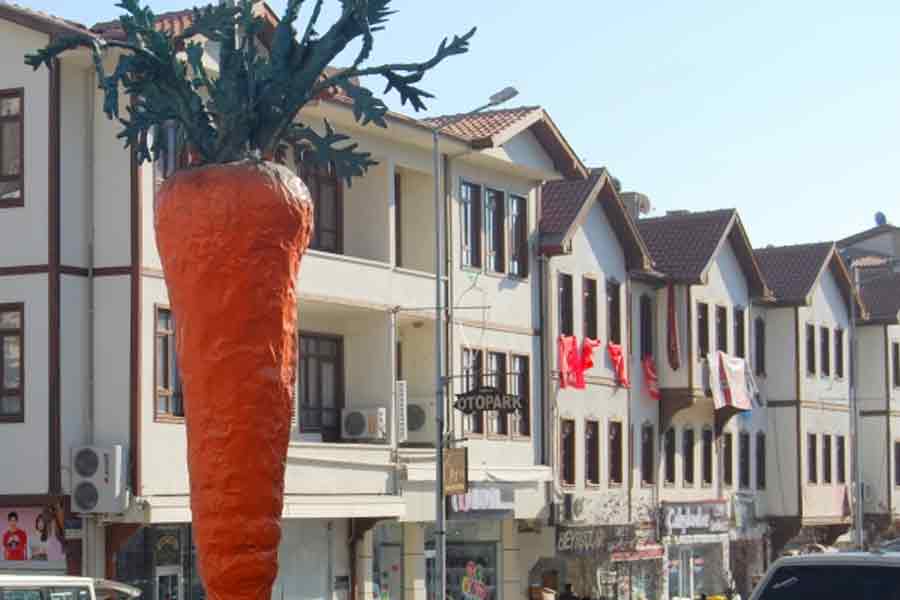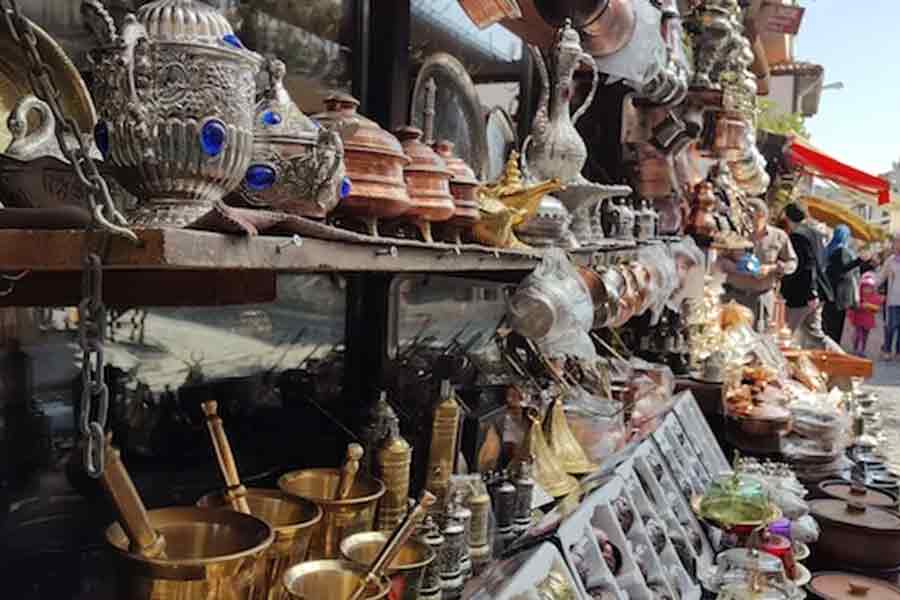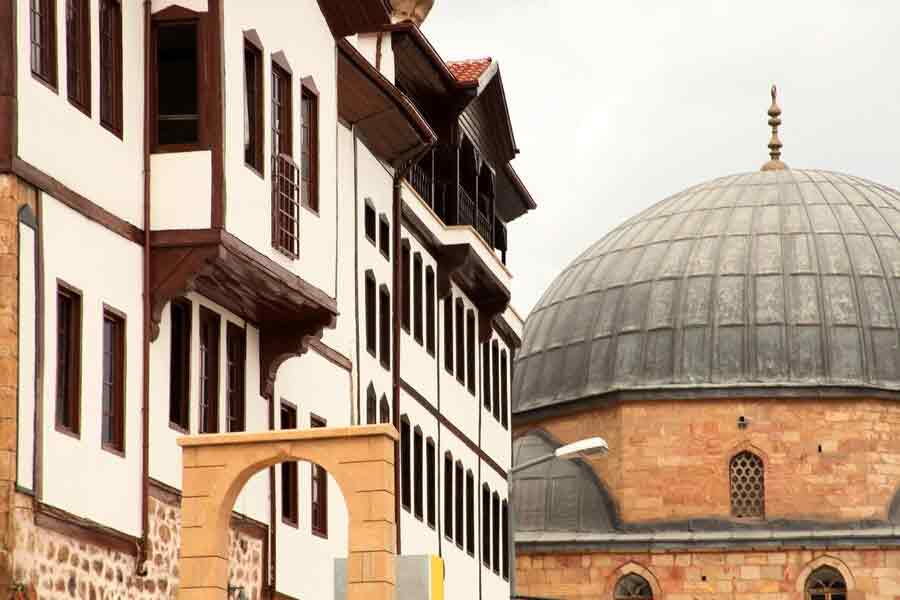Beypazarı is a district of Ankara, which takes place in the Central Anatolia region. Even though Beypazarı is a small district, it has a great value in terms of history, architecture, and tourism. Today, Beypazarı is mainly known for the historical mansions and its mineral water.
Another thing that Beypazarı is known for is the handicrafts, and a great percentage of Beypazarı locals make a living out of processing copper, silver, silk, or other materials to be sold. The tourism activities in Beypazarı increase continuously, as people learn more about the town and want to see the area.
The Ottoman History
Beypazari was previously occupied by many civilizations including the Romans and Seljuk Turks, but it was during Ottoman rule that it became an important trading post and military centre. The Ottoman traveller, Evliya Çelebi documented his travels in the region extensively and he made note of the importance of the town in relation to Constantinople.
When ninety per cent of the town burnt down during a major fire, architects from the Black sea region of Safranbolu arrived to rebuild the town. They did so using the typical two / three storeys, stone buildings that were predominant building trends used by Sultans. That is why upon first glance at any photographs of the region, Beypazari looks similar to Safranbolu.
Ankara
Ankara’s historic Beypazari district on Friday entered the tentative list of UNESCO with its thousands of years old history.
Beypazari has been a settlement since ancient times and holds symbols of ancient traditions with rich historical and natural resources, according to UNESCO.
A popular travel destination close to Turkey’s capital Ankara, the district attracts visitors with its well-preserved old Ottoman houses, diverse local food, and natural sources.
Day-trippers are hosted in traditional Turkish houses, typically two or three-story stone buildings.
As for its local cuisine, the most famous local food is Beypazari kurusu, a traditional long-lasting pastry. Other significant tastes include high-quality natural mineral water, "tarhana" -- a dried crushed mixture of fermented yogurt and wheat flour usually served as a soup -- "eriste" -- traditional noodles -- and stuffed grape leaves.
The fertile soil of the region makes it produce nearly 60% of Turkey's carrots, as well as lettuce, green onion, and spinach farming.
A 3-000-year-old Zerzevan Castle located in southeastern Diyarbakir, the historical port city of Izmir on the Aegean coast, Karatepe-Aslantas archeological site in the central Osmaniye province and Koramaz Valley in the central Kayseri province also entered the UNESCO's tentative list.
Yaşayan Müze (Alive Museum)
Yaşayan Müze (“Alive Museum” when directly translated) is the first applied culture and open-air museum of Turkey, established by Dr. Sema Demir. When looking outside to the Yaşayan Müze, you will directly find it different from other museums. Because the Yaşayan Müze was constructed to a typical Ottoman house, making it impossible to discriminate from a home.
Here you can observe a typical Ottoman household in context. You will be able to learn detailed information about the family that lived there and the traditions in general. There are many exhibitions and events that take place: you can have a quick marbling class or have a photoshoot with old Ottoman costumes.
Ahmet the Coppersmith ( Bakirci / Kalayci )
Ahmet is the local coppersmith. His shop was very busy so everybody assume he is in demand because of his excellence at the trade. Families bring their copper plates and pots for him to clean or engrave with intricate designs.
The skills have been handed down through generations of the family but Ahmet’s son is adamant that he wi ll not continue the family business. Ahmet does not mind. He is adamant that nostalgia will not determine his son’s path in life.
ll not continue the family business. Ahmet does not mind. He is adamant that nostalgia will not determine his son’s path in life.
Beypazari: Town of Carrots
Drive through the centre of Beypazari today and the most obvious landmark is the large carrot standing in the middle of the junction. There is even a yearly festival dedicated to the root vegetable because it is one of the main exports.
Beypazarı Houses
One of the most popular features of Beypazarı is its unique and old-style mansions. Those mansions and houses are over 200 years old and witness to history. Typically, houses in Beypazarı are two or three-floored and have a bay window. Beypazarı houses are designed in a way that each house is adjoining to the other, revealing the social structure. Adjoined houses are a great predictor of strong social bonds and neighborhood concepts.
Even though the houses are adjoined, houses are placed in a way that would not block each other’s sunlight and view. Today, some of those historical houses of Beypazarı serve as a museum, restaurant, small shop, or pension.
Turkish Bath Museum
There is a high chance of you hearing the Turkish bath earlier, and there is also a chance of you having tried it earlier. If you heard it, tried it, or you have not heard it earlier, but you are willing to learn, then you will love the Turkish Bath Museum of Beypazarı. This museum’s main aim is to introduce Turkish bath culture with all the textile products and other materials used in Turkish baths for many years.
Historical Beypazarı Bazaar
Here in the Historical Beypazarı Bazaar, you can find everything, including but not limited to processed copper and handicraft works. This bazaar has a history that is six centuries long and has the sincerest environment ever. You can stroll in various streets in Historical Beypazarı Bazaar to feel the history and get some cool souvenirs.






